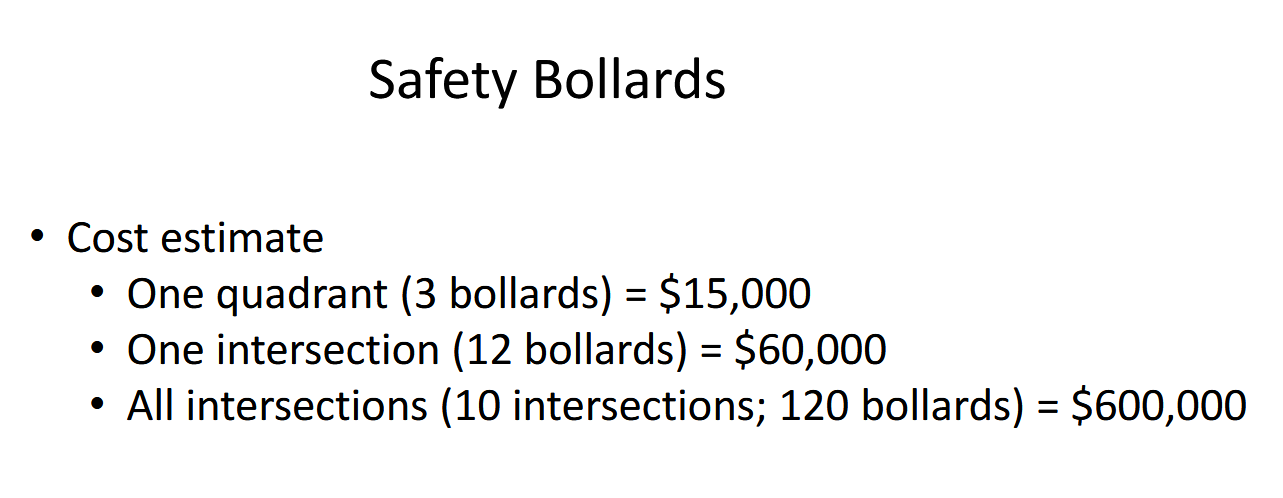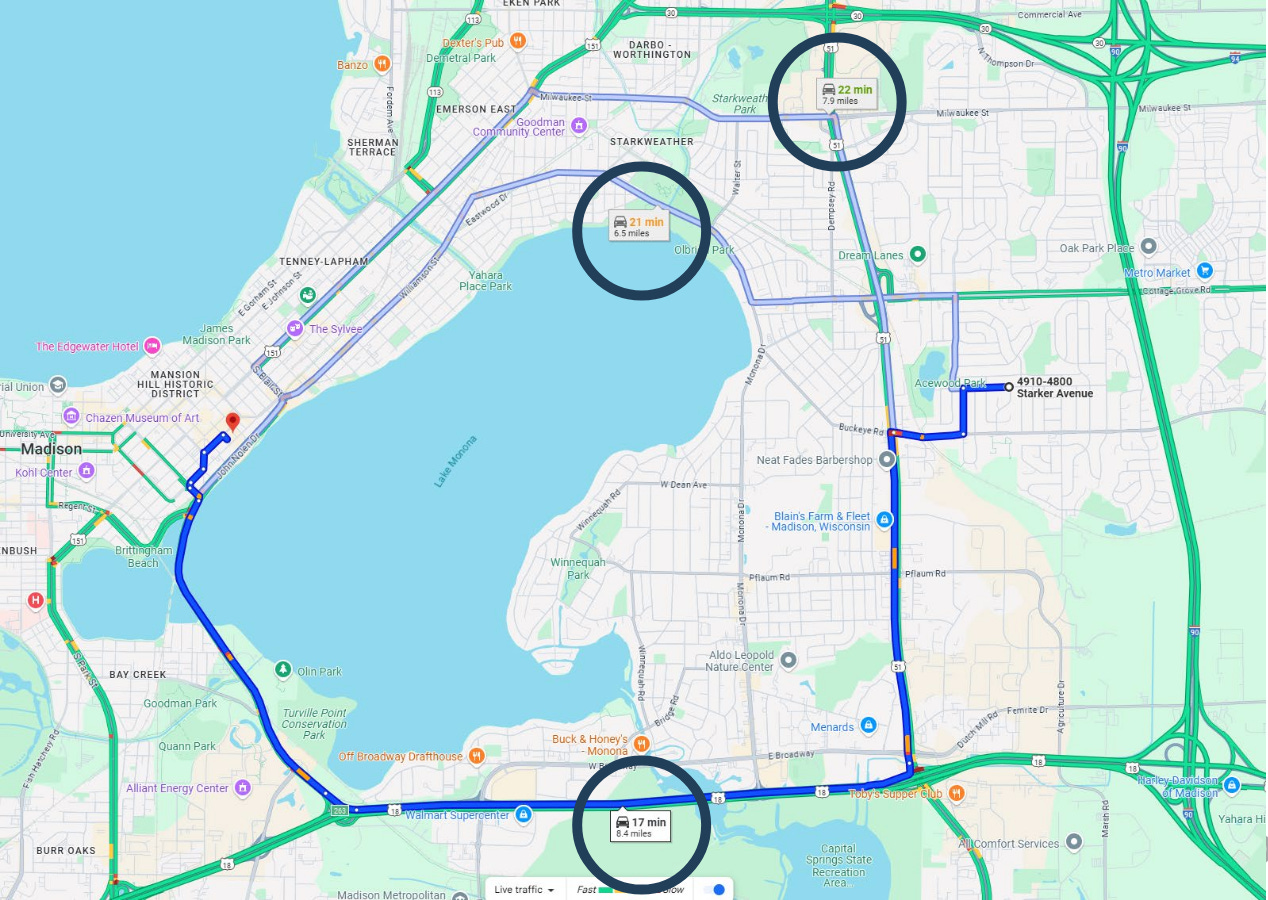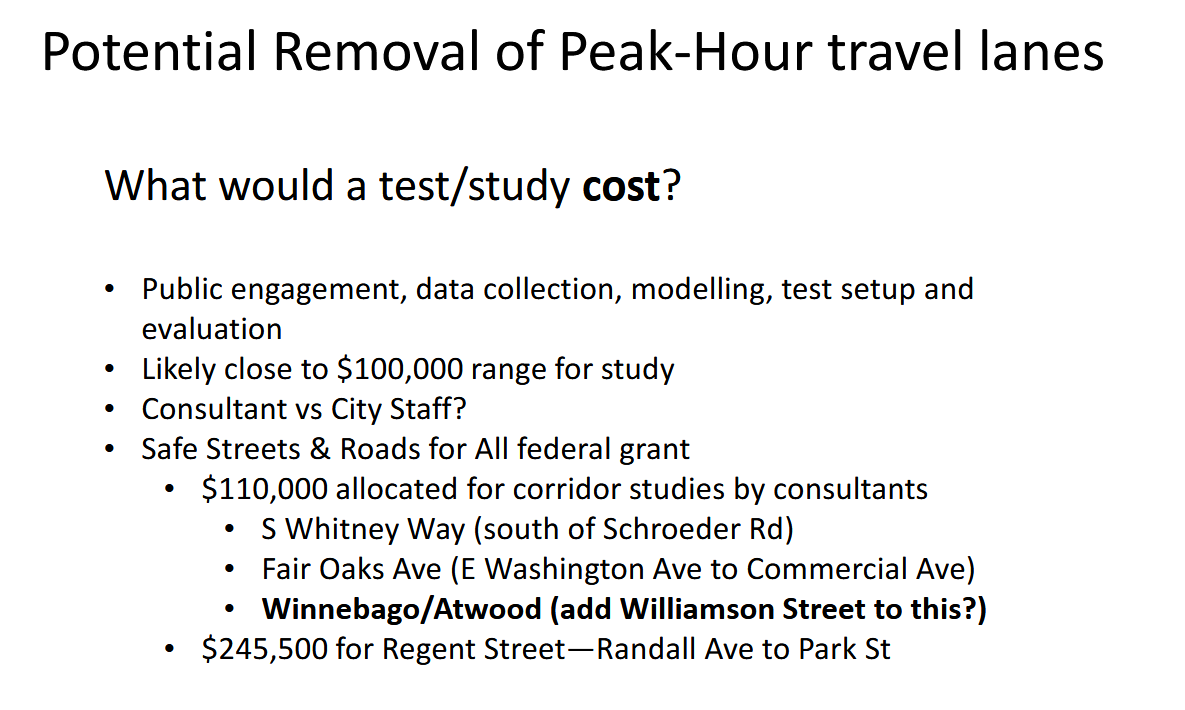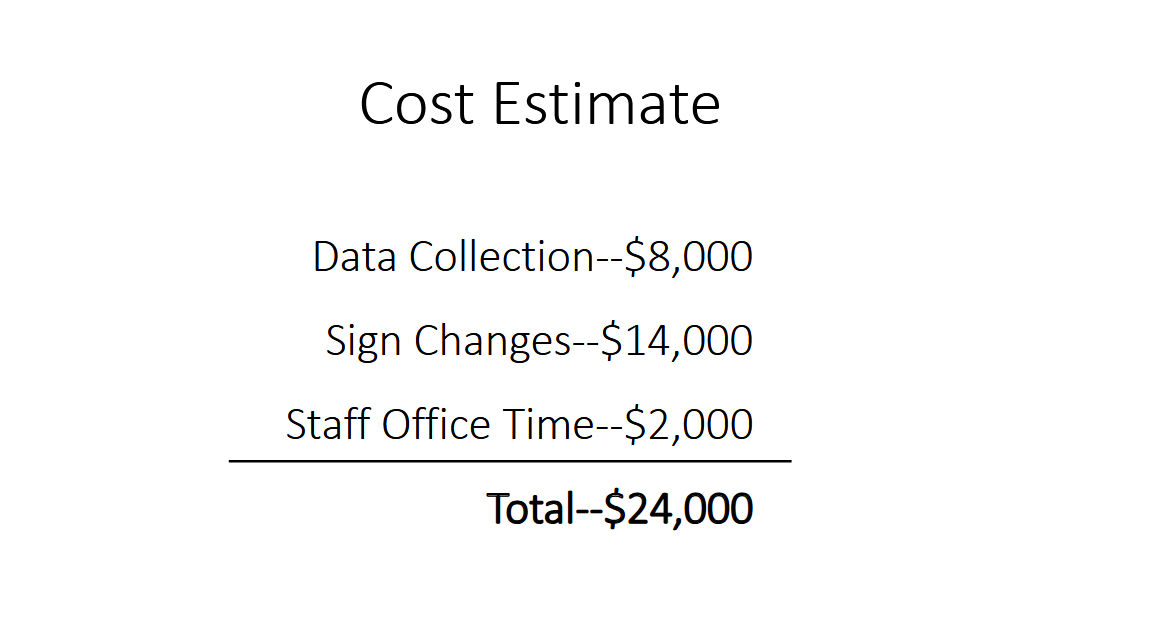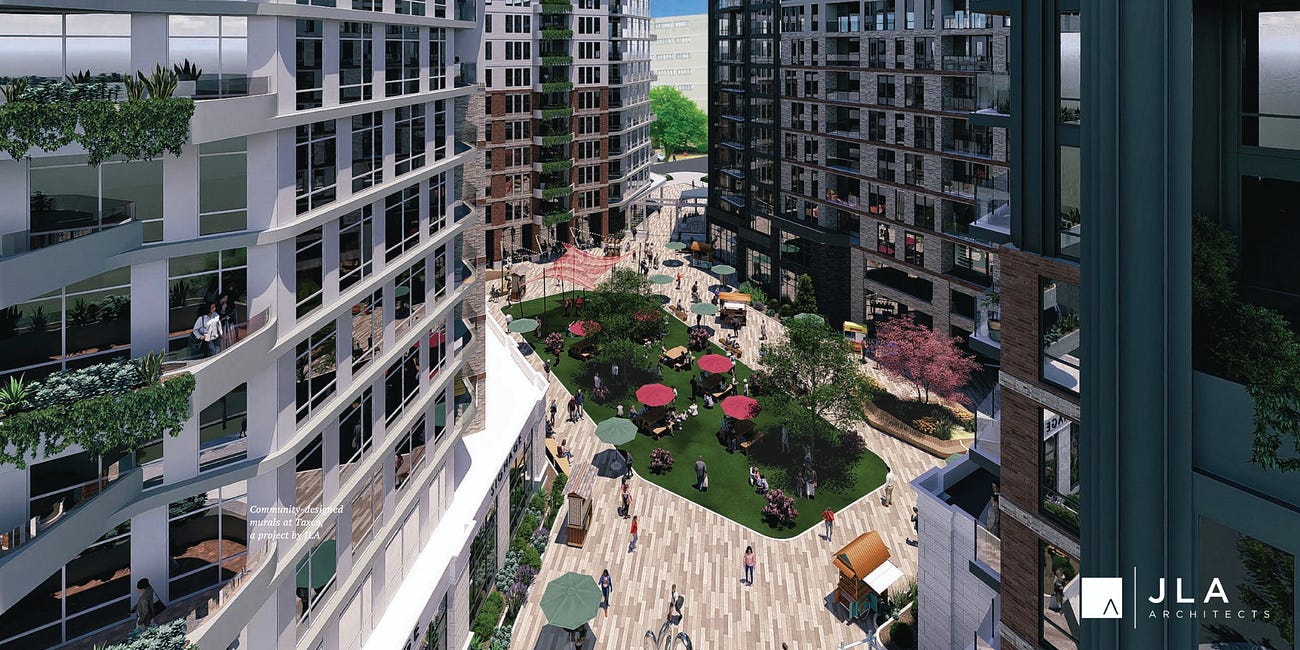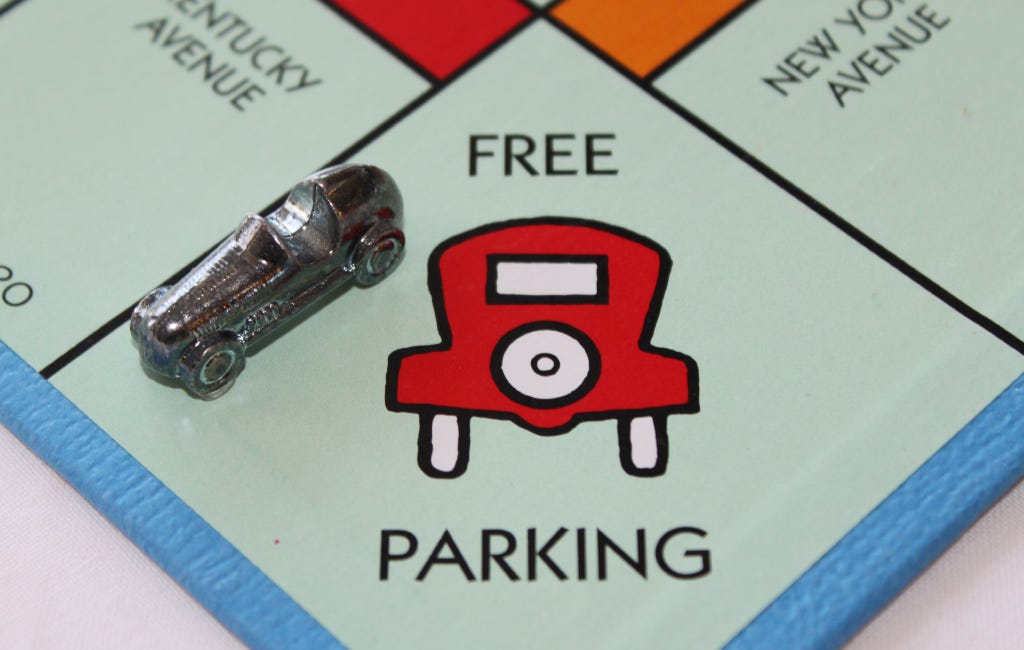Trials are good and we should do more
Madison's Transportation Commission approved a rapid response traffic initiative that could potentially make Willy Street safer and provide a template for future street tests.
The peak-lane removal study has officially begun on September 9th
*Update: Madison TC approved “permanent testing conditions” in November that will keep the removal of peak-hour lanes. Read more about it here.
Cars have crashed into Mother Fool’s Coffeehouse multiple times, most recently in May 2025. There have been at least six major crashes on Williamson Street in the 21st century and a more serious injury or fatality is waiting to happen. This raises the question: what can we do to prevent something like this from happening again?
You go to Transportation Commission and you talk about it.

On August 13th, City Staff, the Transportation Commission, and a few members of the public (including local neighborhood association members) discussed safety concerns on Willy St. and Jenifer St. The discussion centered around removing the peak-hour lanes that currently exist and looking towards implementing safety features like bollards. The staff presentation is full of data and information relating to the crashes, street infrastructure, and costs associated with potential plans. It can be broken into three parts:
What kinds of crashes exist on Willy St. and how do they compare to other streets in Madison?
What safety features could we implement?
How do we study making Willy St. safer?
Is Willy St. an anomaly?
There are two slides that provide context for important points about Willy St.

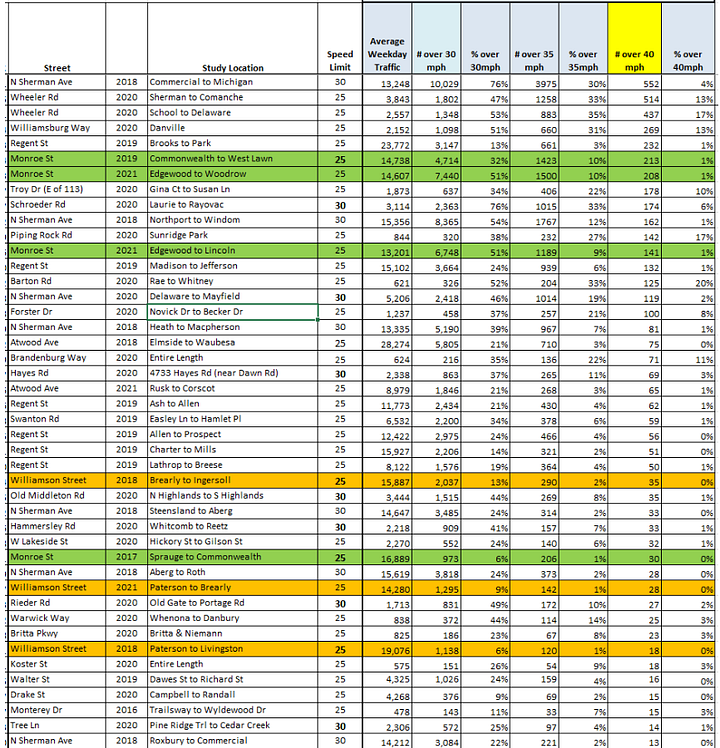
There isn’t necessarily a common cause for these crashes. While there is a peak of crashes during the afternoon peak-hour lane, the trend isn’t necessarily consistent with the morning peak. We also don’t have great traffic data that’s up to date (the last set of data comes from 2017-2018) so we couldn’t compare volume to the number of crashes. There are different types of crashes, including the ones that go into buildings, and the severity ranges.
Willy St. also tends to be slower than most streets. The one-to-one comparison staff made that most closely resembles Willy is Monroe St. near campus. Monroe sees a higher percentage of drivers over 30 and 40 mph. This is likely due to differences in infrastructure; Monroe is closer to a straightaway for most parts and Willy has many intersections.
A fair question for staff to ask the Transportation Commission (TC) is “with our limited resources (funding, staff time), should we be focusing on making Willy St. safer at the expense of other, potentially more dangerous streets in Madison?” And I think what public comment and TC members got at during the discussion was “yes, because Willy St. should be a street and not a commuter road. Even the resemblance of dangerous intersections and infrastructure poses harm to businesses and residents of a growing, dynamic mixed-use neighborhood that we are trying to build more of in Madison.” This is Strong Townsian at it’s core; Willy St. is acting like a stroad and instead we want to slow it down so we can build a more “complex ecosystem” for development that provides businesses and residents more reasons to invest in the area. You can only get investments if people feel like the area is safe to invest in (whether through homes or business).
From a staff perspective, this might be a hard sell because there are more dangerous streets/stroads/roads in the City that could use attention. But the area is such a valuable generator of revenue, particularly in it’s ability to use land efficiently, that any low cost intervention like covering signs to remove a travel lane could pay for itself immediately in greater revenue opportunities.
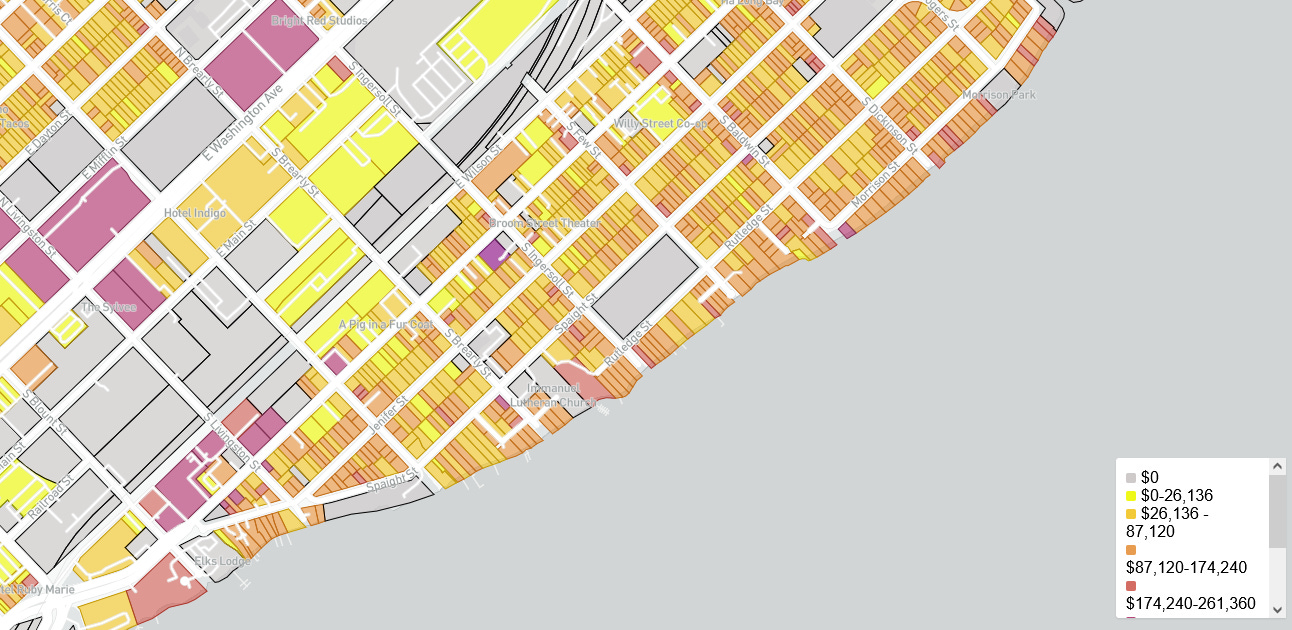
If the area can attract more residents based on it’s perceived walkability and comfort for non-car users, we could see more low to medium-sized apartments and businesses supported by those residents that contribute more tax dollars to the City. And because this area already has street infrastructure, this will cost the City less than creating a new development on the outskirts of the City which requires higher capital expenditures and operating costs over time. The tax revenue added based on these new projects is more likely to expand revenues rather than be eaten away by the costs of supporting additional residents. Infill development is incredible!
Would this be worth jumping the line if we needed $500,000 for the study? Definitely not. But we don’t need that much to try this experiment. In my opinion, the costs of performing this test are so low compared to the potential benefits of a more dynamic Willy St. that it is worthwhile to perform this experiment.
Why isn’t Willy St. safe today?
The Marquette Neighborhood Association published a letter in support of removing these travel lanes, siting a speed study a neighbor performed on two separate days in May. She observed nearly 400 vehicles, of which 84% of them were above the speed limit of 25 mph and at least one vehicle reached 38 mph. This doesn’t surprise me, it’s also not the worst I’ve seen (see below), but how many people are comfortable crossing Willy St. during the dinner hour to go to any one of the highly-touted restaurants or shops in the area when cars could be driving recklessly?
I hosted a Crash Analysis Studio for Madison
A lot of car crashes are preventable, but here in the U.S we do not take serious efforts to prevent them. Over 40,000 Americans die from car crashes each year. Most of the population knows someone who was seriously injured or died as the result of a car crash. The heartbreaking crashes involve people who had no control over the incident, as pedestrians,…
Another neighbor performed a study and observed cars were more likely to travel at faster speeds in the peak-hour lane. We should be designing streets so cars travel at the speed limit by design and we should not be encouraging cars to travel faster by removing elements that slow them down. When the peak-hour removes parking, drivers feel more comfortable to travel faster. That’s a serious problem and something I hope we can resolve.
At the same time, what prompted this test was cars crashing into buildings. City Staff indicate that bollards could be installed on the corners of intersections at the cost of $5,000 per bollard, $15,000 per corner (3 bollards), $60,000 per intersection, and $600,000 for every intersection on Willy St.
This is “expensive” for an initial cost, but we have to consider downstream effects of protecting businesses. Mother Fool’s pays about $6,000 in property taxes to the City. It also employees people who pay incomes taxes to the State, that will come back in a roundabout way to City funding. Building crashes aren’t common, but it’s enough to at least think of it in terms for the cost of doing business on Willy St. per Cailey Jamison on the commission. Willy St. generates $2,600,000 (based on 2024 data) in property tax revenue alone, not even considering the properties that are just off of it and benefit from living in the area. That revenue is dispersed for different needs and initiatives in the City and it would be too simplistic to say the money generated in the area should only be used for the area. But it might be something for the City to consider addressing for future infrastructure requirements. In areas where we expect drivers to slow down, like the Regent St. reconstruction, can we allocate funds to provide bollard protection from the outset and protect our building investments so we don’t lose businesses and their tax dollars?
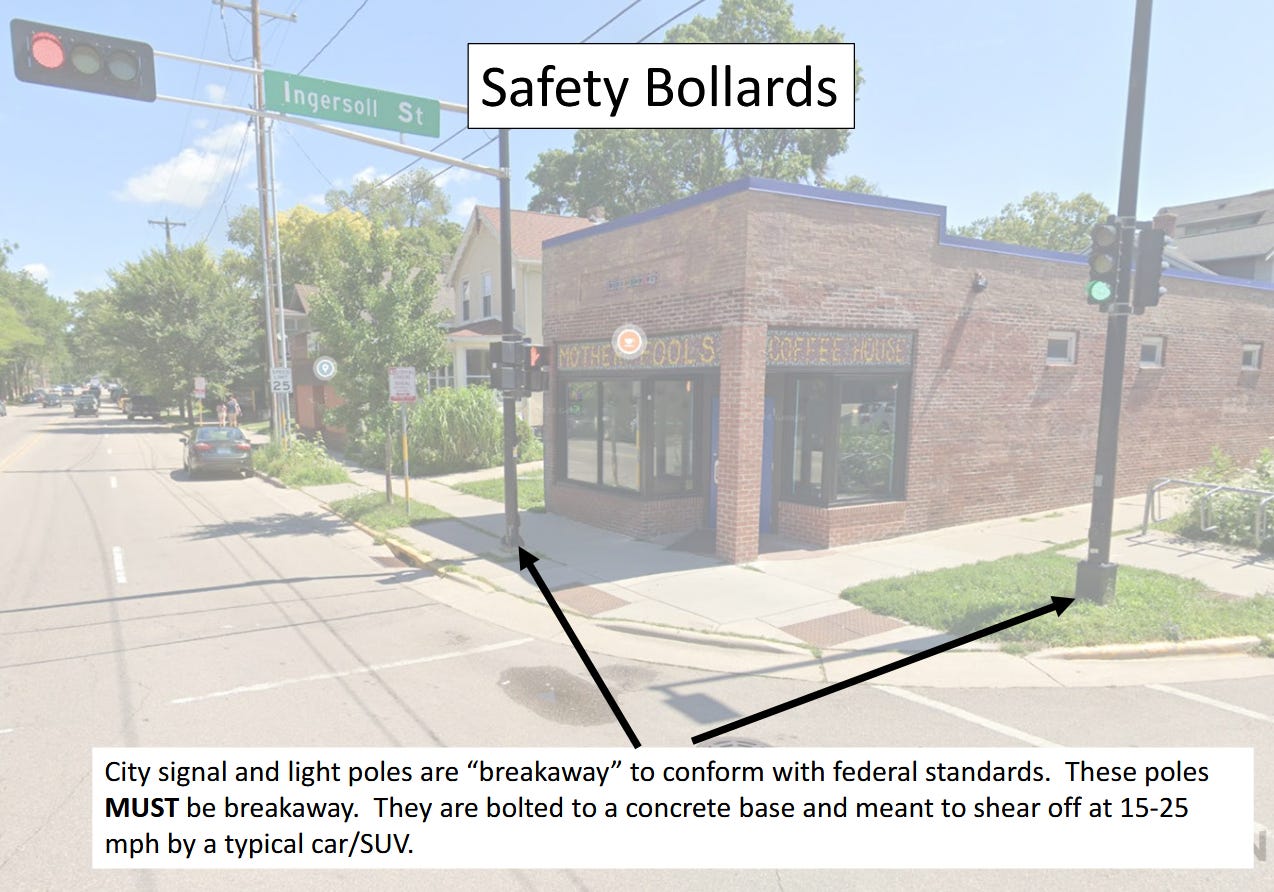
If bollards are too expensive to implement now, the next best thing we can do is keep parked cars in the way of buildings and pedestrians. Even though I’m not a fan of excessive parking, in this instance I will allow that parked vehicles are great bollards. They also decrease the width of the available driving space, which tends to slow people down. Staff was correct to identify removing parking spots close to intersections, to allow for cars to move past cars trying to turn left from the single lane. I think there’s some potential hazards with cars turning right that aren’t looking for pedestrians, but I’ll take the compromise in moving vehicle traffic if, in general, these cars will be moving slower. Some might say that removing these parking spots makes it more likely that buildings on corner intersections are more likely to be hit. Why change anything if that’s the case? For me, it’s because the goal isn’t to reduce cars crashing into buildings specifically, it’s to make the area safer as a whole.
What’s the purpose of this study?
I expect that many commuters will be frustrated by this change. If Willy St. was a shortcut to avoid E Washington Ave and it saves 2 minutes on the ride to and from work, this change is net negative for them individually. However, for everyone in the area that wants to make the place livable, and not just a cut through road, this study can help with perceptions of comfort and safety on Willy St.
It’s going to be hard to measure outcomes for this because we don’t plan car crashes1. We can’t say that these changes definitively increased or decreased crashes over the two month time period. We should be hesitant to declare victory or defeat if the area sees more or less crashes or injuries. From my point of view, there are a few tangible and intangible wins that could come from this study:
Decreased traffic speeds (without increased speeds on Jennifer St.)
Increased perceived comfort for people not in vehicles
Increased capacity to perform more experiments like these
If we do see vehicles adhering to slower speeds, I think that’s enough to claim maintaining the lane closures. Slower speeds save lives. City Staff expressed concerns with traffic backing up all the way out to John Nolen Drive and causing knock-on effects to other commuters2. I think this is a positive outcome if it can convince more commuters to move to E Washington Ave or the Beltline. Staff included this graphic showing hypothetical commutes from the far East side and how with John Nolen moving to one lane, we could see a considerable amount of traffic move to Willy St.:
But we should be encouraging drivers to take the all-highways route (John Nolen or E Washington)! These roads are designed to move vehicles efficiently. If the difference is a minute, but we can ensure better safety and business for those on Willy St., that’s a worthy tradeoff. Especially when E Washington is under capacity and could use more traffic.
I don’t know if we will be able to determine the perceptions of safety beyond surveying people hanging out or working in the area. If you live/work/frequent the area, please take the Williamson Street Survey to provide feedback! Additionally, Strong Towns Madison is celebrating Park(ing) Day on 9/19 by hanging out in two spots in front of the Madison Greenhouse Store. Come say hi and fill out the survey with us!
My most important takeaway from this whole experiment will be staff’s ability to replicate this experiment across the rest of the City. Even if removing these peak-hour lanes doesn’t contribute to lower speeds and more comfort for people, we should be as agile and cost effective as this experiment is for every other street test we perform. Here’s what the initial cost estimate looked like from staff:
The actual costs from staff at the next TC meeting:
This is a reduced test. It’s going to last two months, there isn’t the same baseline data to compare against, left lane turning might be more difficult, there’s no public outreach before the study, and there will be less infrastructure on the ground.
But, this is happening now (rather than in 3 years) at 75% of the projected cost. That is a serious win for making productive changes in the City. Permanent infrastructure is great, but adaptability to the needs of a growing population is critical. We could get survey data, hire consultants to draft lofty designs, and get state-of-the-art data collection tools to make sure we don’t miss any potentially important data points3 at the cost of lots of money and tons of time.
OR we can just try something that’s cost-effective and see if it makes the situation better. We can use City Staff to build capacity to perform more of these experiments instead of hiring costly consultants. We can see how residents react to the changes in the moment rather than pre-register opinions about change that’s almost guaranteed to be negative even if it’s beneficial (think congestion pricing in NYC). We can make changes immediately when fatalities occur to prevent them from happening again instead of putting it on a list and waiting for another death.
If it ends up not working, great, we tried and we can put the signs back. We spent $24,000 instead of over $100,000. We can learn more about how our traffic network behaves and what other solutions can contribute to the problem. If it does work, even better, we know what can work and we can apply it else where. Importantly, we can increment and adjust, slowly making the City a safer place to live in and creating a more prosperous place for everyone.
More from Counting Cranes
Getting to a Land Value Tax in Wisconsin
I previously wrote about my desire to implement a land value tax (LVT) in Madison. I discussed several vacant or underused lots near Downtown that I think would see rapid development if they were appropriately assessed and taxed.
Parking Mandates: please end them
Madison has started to talk about parking mandates. Or maybe it’s just our Strong Towns Local Conversation. In any case, this is important to me because these rules do not make sense and they should not be on our books.
But we do encourage them!
This will get worse with the John Nolen Drive reconstruction starting in October
In my mind the first two are negatives anyway




